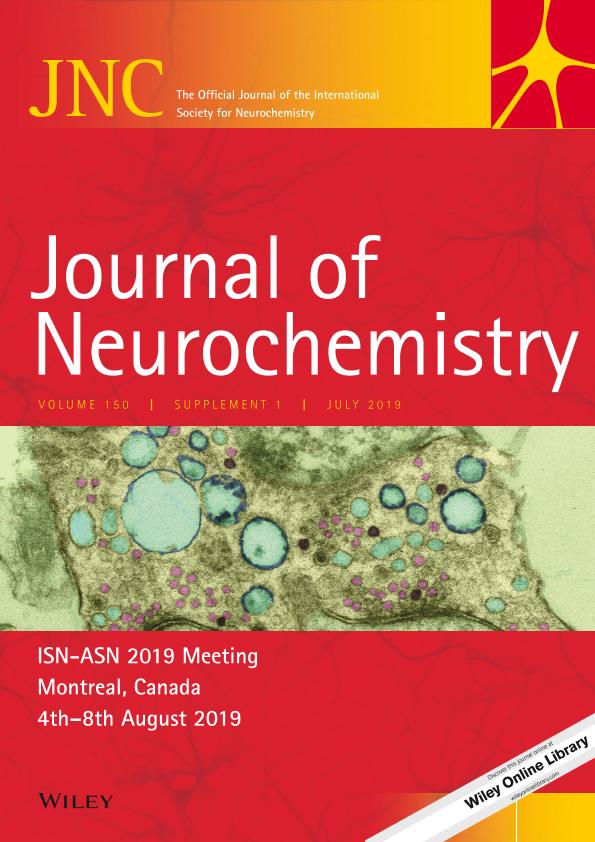Evento
Inner hair cell and neuron degeneration contribute to hearing loss in a DFNA2-like mouse model
Carignano, Camila ; Barila, Esteban Pablo
; Barila, Esteban Pablo ; Rias, Ezequiel Ignacio
; Rias, Ezequiel Ignacio ; Dionisio, Leonardo Raul
; Dionisio, Leonardo Raul ; Aztiria, Eugenio Manuel
; Aztiria, Eugenio Manuel ; Spitzmaul, Guillermo Federico
; Spitzmaul, Guillermo Federico
 ; Barila, Esteban Pablo
; Barila, Esteban Pablo ; Rias, Ezequiel Ignacio
; Rias, Ezequiel Ignacio ; Dionisio, Leonardo Raul
; Dionisio, Leonardo Raul ; Aztiria, Eugenio Manuel
; Aztiria, Eugenio Manuel ; Spitzmaul, Guillermo Federico
; Spitzmaul, Guillermo Federico
Tipo del evento:
Reunión
Nombre del evento:
The International Society for Neurochemistry and the American Society for Neurochemistry Meeting
Fecha del evento:
04/08/2019
Institución Organizadora:
International Society for Neurochemistry;
American Society for Neurochemistry;
Título de la revista:
Journal of Neurochemistry
Editorial:
Wiley
ISSN:
1471-4159
Idioma:
Inglés
Clasificación temática:
Resumen
DFNA2 is a progressive deafness caused by mutations in thevoltage-activated potassium channel KCNQ4. Hearing loss developswith age from a mild increase in hearing threshold to profounddeafness. The first phase starts around 10-15 years old, progressingto the last phase by the age of 70. Studies using transgenic mice forKcnq4 expressed in a mixed background demonstrated the implicationof outer hair cells (OHCs) at the initial phase. However, itcould not explain the last phase mechanisms of the disease. Geneticbackgrounds are known to influence disease expressivity. Tounmask the cause of profound deafness phenotype, we backcrossedKcnq4 knock-out allele to the inbred strain C3H/HeJ and investigatedinner and outer hair cell and spiral ganglion neuron (SGN)degeneration across lifespan. In addition to the already reportedOHC death, C3H/HeJ strain also exhibited inner hair cell (IHC) andSGN death. We tracked the spatiotemporal survival of cochlear cellsby plotting cytocochleograms and neuronal counts at different ages.Cell loss progressed from basal to apical turns with age for both haircells. Interestingly, the time-course of cell degeneration wasdifferent for each cell-type. While for OHCs it was already presentby week 3, IHC and neuronal loss started 30 weeks later. Weestablished that OHC loss kinetics slowed down from basal to apicalregions correlating with KCNQ4 expression pattern determined inwild-type mice. Our findings indicate that KCNQ4 plays differentialroles in each cochlear cell-type impacting in their survival ability.IHC and SGN neuron death generates severe hearing loss that couldbe associated to the last phase of DFNA2.
Palabras clave:
KCNQ4
,
DEAFNESS
,
HAIR CELL
,
DEGENERATION
Archivos asociados
Licencia
Identificadores
Colecciones
Eventos(INIBIBB)
Eventos de INST.DE INVEST.BIOQUIMICAS BAHIA BLANCA (I)
Eventos de INST.DE INVEST.BIOQUIMICAS BAHIA BLANCA (I)
Citación
Inner hair cell and neuron degeneration contribute to hearing loss in a DFNA2-like mouse model; The International Society for Neurochemistry and the American Society for Neurochemistry Meeting; Montreal; Canadá; 2019; 159-159
Compartir
Items relacionados
Mostrando titulos relacionados por título, autor y tema.
-
Artículo Inner Hair Cell and Neuron Degeneration Contribute to Hearing Loss in a DFNA2-Like Mouse ModelCarignano, Camila ; Barila, Esteban Pablo ; Rías, Ezequiel Ignacio; Dionisio, Leonardo Raul ; Aztiria, Eugenio Manuel ; Spitzmaul, Guillermo Federico (Pergamon-Elsevier Science Ltd, 2019-07-01)



